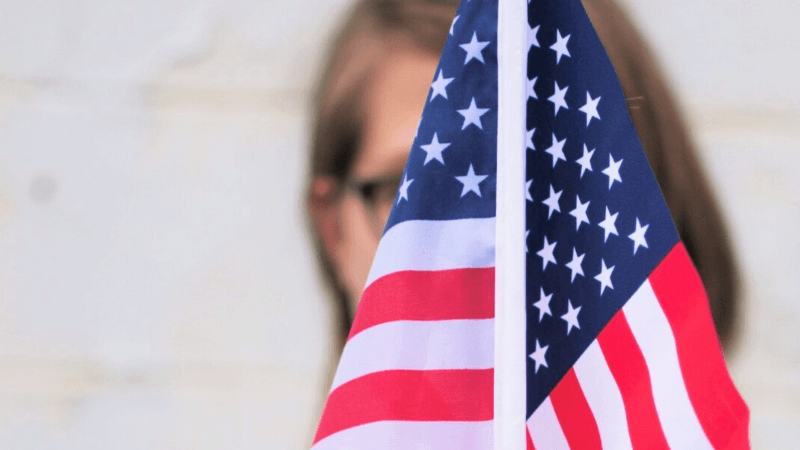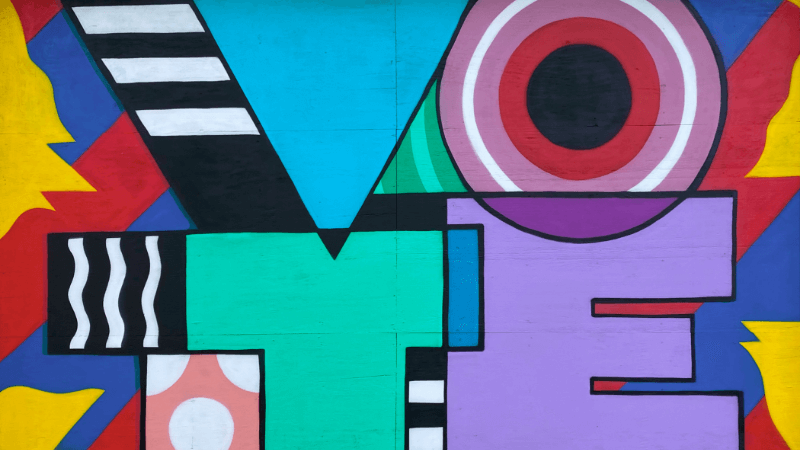There’s an old adage, “Never talk about religion or politics in polite company.” While this may keep things pleasant, it often leaves a conversation superficial and can wither the potential for meaningful, genuine connection.
At Mindful Schools, we take our role in the secular Mindfulness in Education movement seriously. And sometimes that means talking about difficult things that matter. We’ve written previously about our take on mindfulness and religion (here and here), and responded openly to the last presidential election in the United States. And while we don’t want to enter the partisan fray, we do wish to clearly affirm our guiding values of compassion, empathy, tolerance and integrity.
As great forces of change, divergent views, and swells of protest sweep through our country and government, we want to share some reflections on the role of mindfulness during these challenging times. For the parents, teachers, guidance counselors, and others working hard everyday to teach our children and youth, we want you to know that we are here to support you in your commitment to water the seeds of kindness, wisdom, and ethics in future generations.
Mindfulness is an Open Door
If you’re just tuning in: mindfulness is the capacity to know what’s happening in our own direct experience, and to observe it with openness, curiosity, and balance. Mindful awareness is not religious, nor is it partisan; one needn’t subscribe to any particular political philosophy to benefit from mindfulness. All are welcome to this practice, and in our community here at Mindful Schools.
Mindfulness Includes Ethics and Supports Action
If we observe the present moment carefully and continuously enough, we come face to face with our own vulnerability, mortality, and deep longing to be happy. This awareness opens us to a profound respect for the poignancy of being alive, and a sense of care and concern for all sentient life.
Out of this understanding grows a commitment to not cause harm, and to do what we can to prevent, stop, or minimize others from causing harm. In the classroom, we often use mindfulness to strengthen the capacity for empathy — a cornerstone of ethical action. Inviting children to notice and feel their own inner experience helps them recognize that other children too have an inner life and feel things.
Thus the practice of mindfulness is intricately tied to values of care, kindness, compassion, mutual respect and understanding. The guiding ethos is to not cause harm — to ourselves or others.
These values have ethical implications for how we engage in the world, and for how we respond to others. We can speak forcefully — with all of the care and love in our hearts — against things that we deem dangerous or harmful; and we can act decisively to protect the well-being of people, animals, and ecosystems. The key here is that mindfulness gives us the space to see our own feelings and reactions more clearly, allowing us to better evaluate how to respond.
Mindfulness Has Space for Everything
What’s larger than awareness? Being aware of something doesn’t mean we agree with it or endorse it: it just means we know what’s happening. Ignorance breeds strife. It is by not knowing what is happening — by ignoring the science behind climate change, or the refugee crisis, or the dynamics of racism or economic inequality; by turning a blind eye or refusing to talk about these uncomfortable things that we run the risk of being complicit in great harm.
Practically speaking, this means a few things.
Be Willing to Feel
First, it means being willing to feel, little by little, whatever you are feeling. Having the inner ally of mindfulness won’t necessarily make challenging times easier per se. In some sense, the more we practice, the more acutely we feel things. (This is where the part about “openness, curiosity, and balance” comes into play.)
What balanced mindfulness does offer is the strength to slowly digest our own inner experience. We can build our capacity to be mindful of intense emotions, from anguish to panic to rage. Often, this means taking intense experiences in bite-sized pieces. Don’t try to hold the pain of the world all at once. Use your wisdom to feel what you can, and take breaks. It’s important to give your nervous system periods of respite where you touch into states of deep relaxation and natural ease, be this through our contemplative practice (e.g., the simplicity of the breath), nourishing social engagement, time in nature, or other such activities.
For many, this also translates into focusing our attention and moderating our news intake. Choose two or three issues you care about instead of trying to stay up to date on everything. Be mindful of your emotions and responses as you watch, read, or listen to the news. Monitor your level of activation and be willing to restrain the impulse to click the next article or post in the feed. Being overwhelmed is just as ineffective as avoiding or ignoring what’s happening.
Sometimes, being willing to feel means letting your heart break open. Mindfulness doesn’t yield any pat answers. It teaches us to be more okay with not knowing. It helps us to come into direct contact with reality — and that can break your heart. When we allow things to touch us deeply, we come out the other side with a bigger, more resilient heart.
Reach Out to Those with Different Views
Indeed, the result of dedicated mindfulness practice is a synergy of clarity, strength, warmth, and humility. This gives us the space to hear and dialogue with others, and to express ourselves openly and fully, without self-consciousness. If the differences that divide our country are to be healed, we must begin by reaching out to our friends, family, and neighbors with whom we differ, and building relationships based on mutual trust and respect.
The spaciousness of mindfulness, then, also allows us to listen to and engage with others who hold different views. While the practice rests upon certain fundamental principles (all humans share a basic goodness; what we do and say matters / actions have effects; causing harm goes against our shared humanity; inner transformation is possible), it also supports a flexibility of mind that weakens the psychological need to identify with a certain “camp” or view.
In this way, mindfulness can be a key component in finding ways to resolve differences, rather than being yet another view that separates us from each other.
Talk to Your Students
“Mindfulness has space for everything” also means that as educators, we have an opportunity — perhaps even a responsibility — to talk with our kids about what’s happening. This is not about instilling any particular political viewpoint into the classroom. It’s about being willing to use current events as part of your teaching, and about providing a sense of stability and safety in the classroom for those who feel most threatened or endangered by what’s happening.
It’s also about giving children the skills to think critically, to question assumptions and investigate bias (in the media or in the mind). It’s about showing them how the steady, observational power of mindfulness can be an essential tool in carrying out our civic duty as citizens of a democratic society.
Get Involved
I want to close by returning to the point that balanced awareness translates into action. When we have the inner space to process our experience, we are afforded the time to hear our intuition, to discern what’s needed, and to formulate an appropriate response.
Sometimes that response is to step back and take care of ourselves: spending time with family, walking in nature, or finding strength and solace in contemplative practice. At other times, it means stepping up and calling your Senators, taking to the streets to protest or support things you care about, or emailing everyone in your community to join you.

